In Vancouver, Canada, lies a sanctuary known as the South Arm Marshes Wildlife Management Area. Though it lacks an official park designation, it serves as a true bird sanctuary. The area is filled with various migratory birds and other wildfowl, making it a dedicated bird conservation zone. Due to its remote location, it remains relatively unknown. It sits at the mouth of the Fraser River, where it flows into the Pacific Ocean, on a delta along the Canada-US border. The sanctuary operates with an open-access policy, allowing visitors to enter freely. A small donation box hangs on the exterior of a wooden hut, encouraging visitors to contribute 5 CAD voluntarily—though it’s not mandatory.
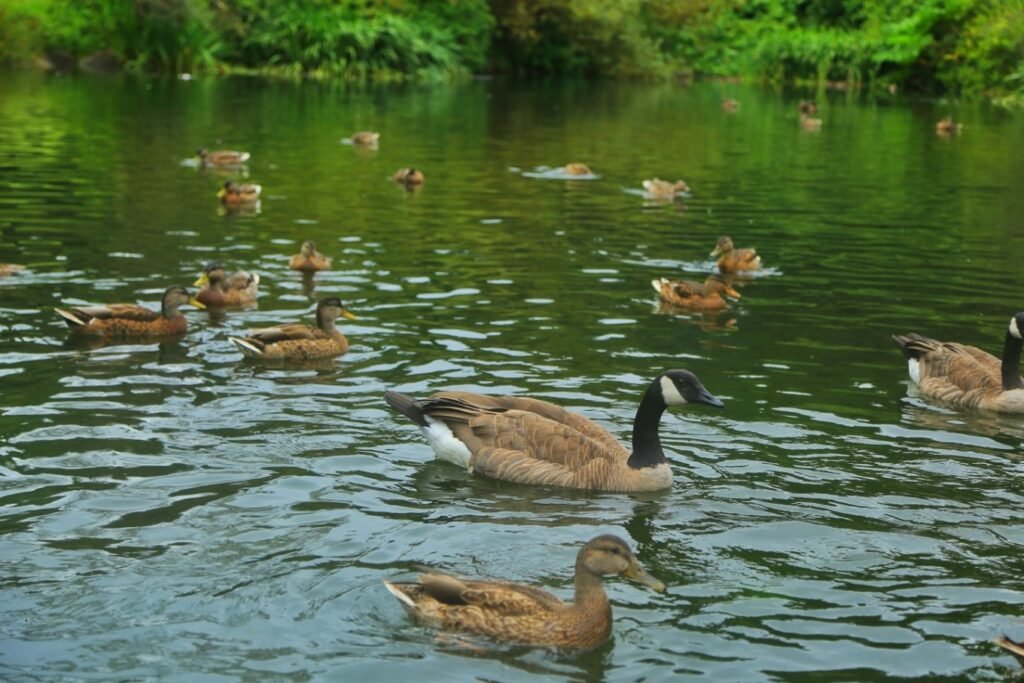
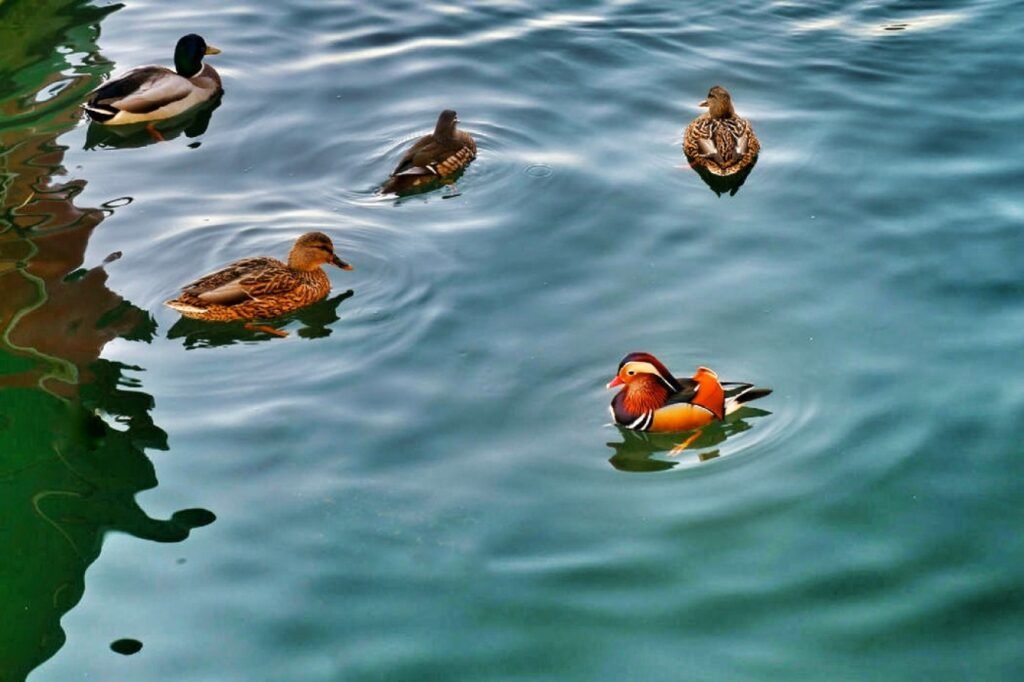
Upon entering, visitors are immediately greeted by graceful red-crowned cranes standing on the lawn. These elegant birds have seemingly made this marsh their permanent home and now serve as welcoming ambassadors. Their presence brings joy, inspiring a sense of peace and serenity. Their poised posture and soaring elegance easily stir the imagination. “On a sunny day, a crane rises through the clouds, leading the spirit to the heavens.” Cranes, with their ethereal beauty, often spark poetic musings.
In Chinese culture, cranes symbolize nobility and virtue, and they play a significant role in traditional folklore and customs. China, home to many crane species, has a deep cultural affection for these birds. Many places carry their name, such as Hebi, Hegang, Heshan, and Hefeng. Numerous crane sanctuaries also dot the country, from the Qinghai-Tibet Plateau to the Jianghan Plain, from Zhalong Wetland in Heilongjiang to the coastal wetlands of Yancheng, Jiangsu. With over ten crane species, China boasts the world’s highest crane diversity. Cranes, with their graceful demeanor, have even been endowed with the virtues of loyalty and moral integrity in ancient Chinese culture. Once embroidered onto the robes of high-ranking officials, they symbolized the honor and uprightness of those in office. Seeing these noble birds now welcoming visitors adds an unexpected sense of delight.
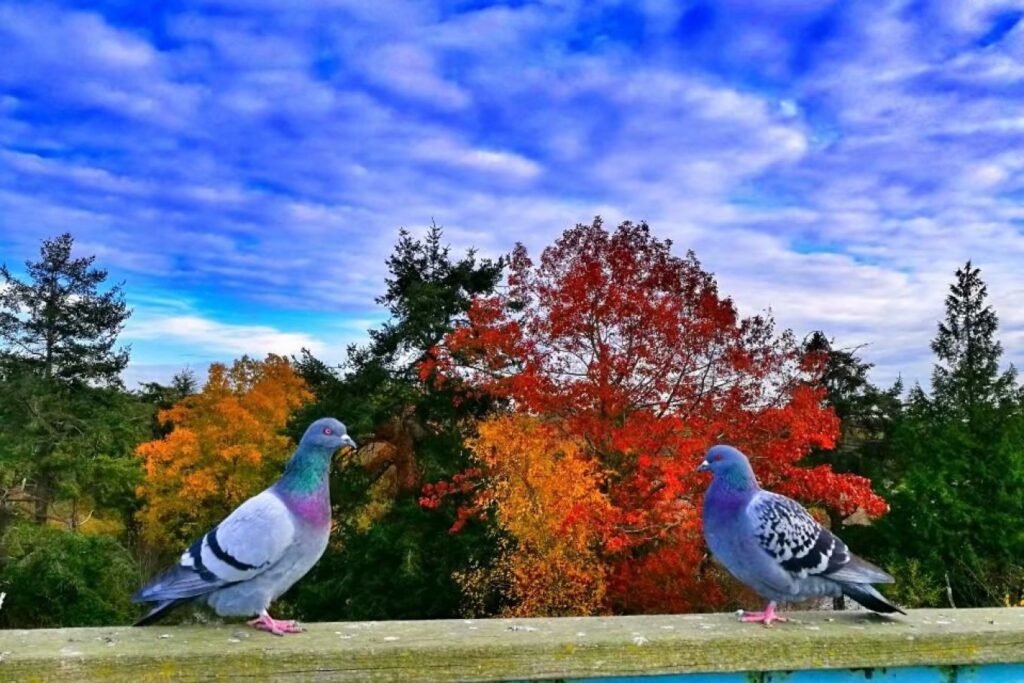
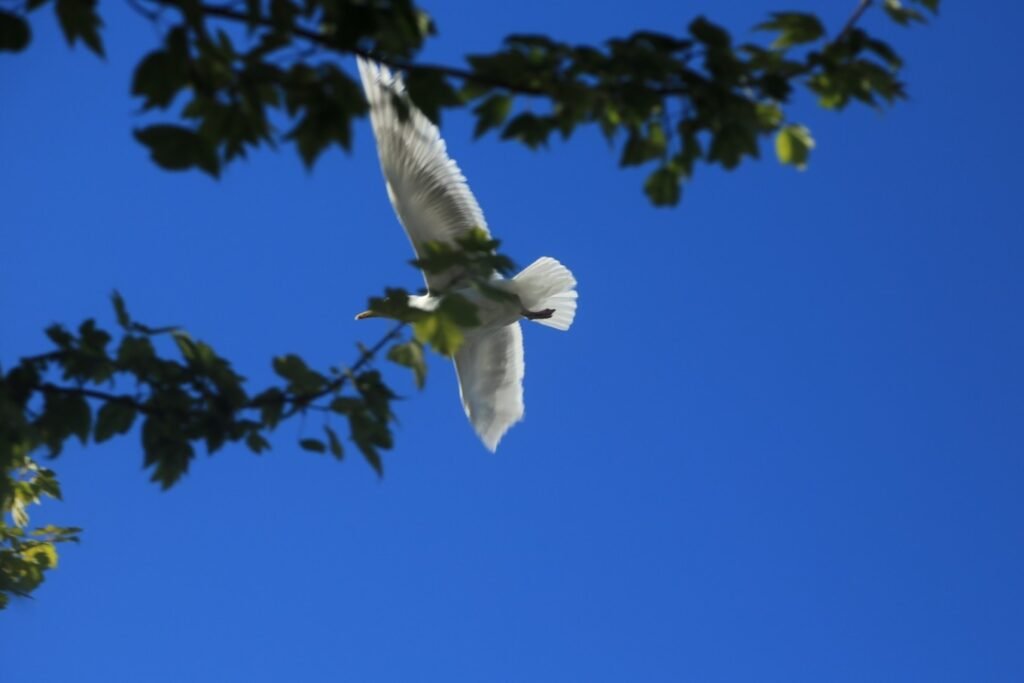
The bird park is very easy to explore. It takes advantage of the delta terrain and natural bays to form a series of channels, creating several bird gathering zones. These zones are interconnected by waterways, allowing visitors to return naturally no matter which path they take. Not far into the park, you can spot pairs of vividly colored mandarin ducks by the shallow ponds. “Mandarin ducks play among the flowers and willow branches, always in pairs.” Their delightful appearance is a joy to witness.
In early spring, as the water warms and trees begin to sprout new leaves, the scene is idyllic. Willows sway at varying heights, blossoms scatter near and far—”In the clear spring water, mandarin ducks bathe.” The sight resembles a picturesque scene where “green threads of willow sweep over the mandarin duck bay.” As we moved closer, the ducks, initially scattered and feeding alone, quickly paired up again, a charming display of their nature.
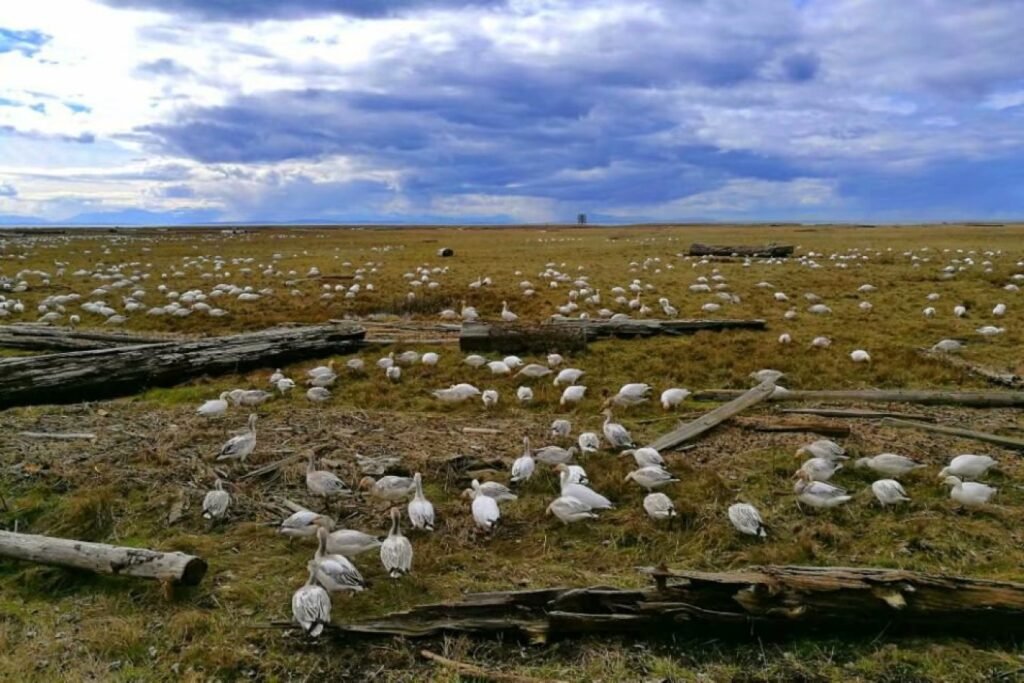
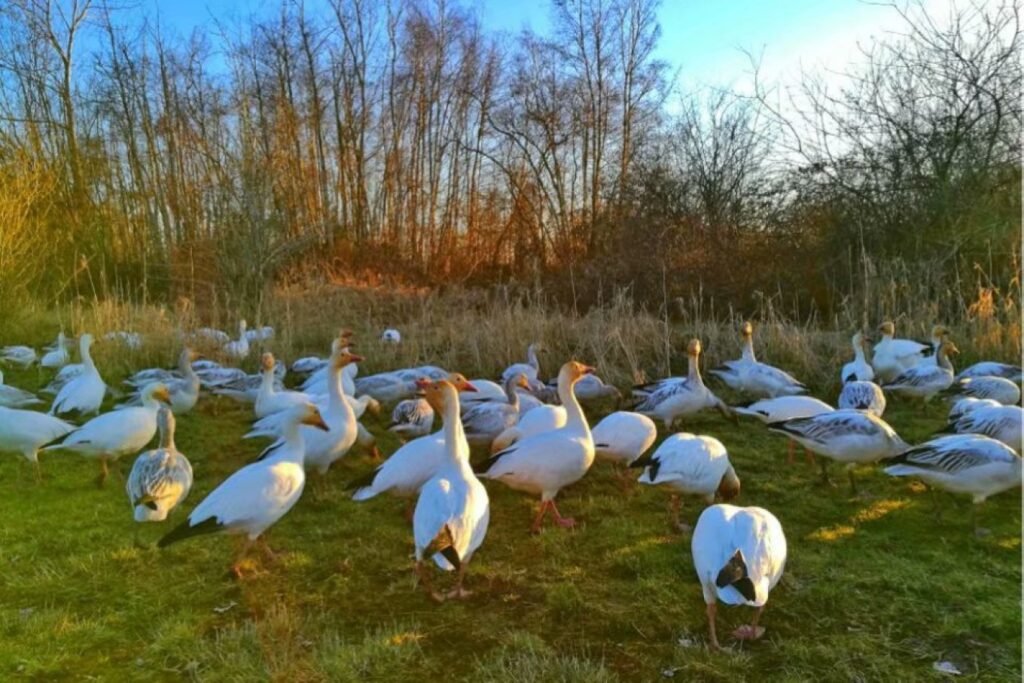
Mandarin ducks are gentle by nature and prefer to stay in pairs, spending their days together, sleeping side by side. This trait has long led to their association with human emotions and desires. “The pain of separation mirrors the mandarin ducks’ sadness”—in literature, they symbolize affection. “A pair under the parasol tree, staying together in life and in death”—in folklore, they embody love and loyalty. The saying “Better to be mandarin ducks than to envy immortals” reflects the simple longing of ordinary people for companionship. Through traditional embroidery, the lively image of these birds has become deeply embedded in people’s minds. Now, seeing them freely roaming before us adds a touch of beauty to the everyday.
The park’s most prominent residents, however, are the Canada geese, which are the true stars of this sanctuary. Known by their scientific name Branta canadensis, they are native to North America and are often regarded as Canada’s national bird. Their black heads and necks give them the alternate name of “black-necked geese.” They are also widely recognized by their English name, Canada Goose, although this literal translation has led to some confusion. Though they carry the title of a national bird, it feels a bit ironic that these majestic creatures share their name with a high-end luxury clothing brand renowned worldwide.
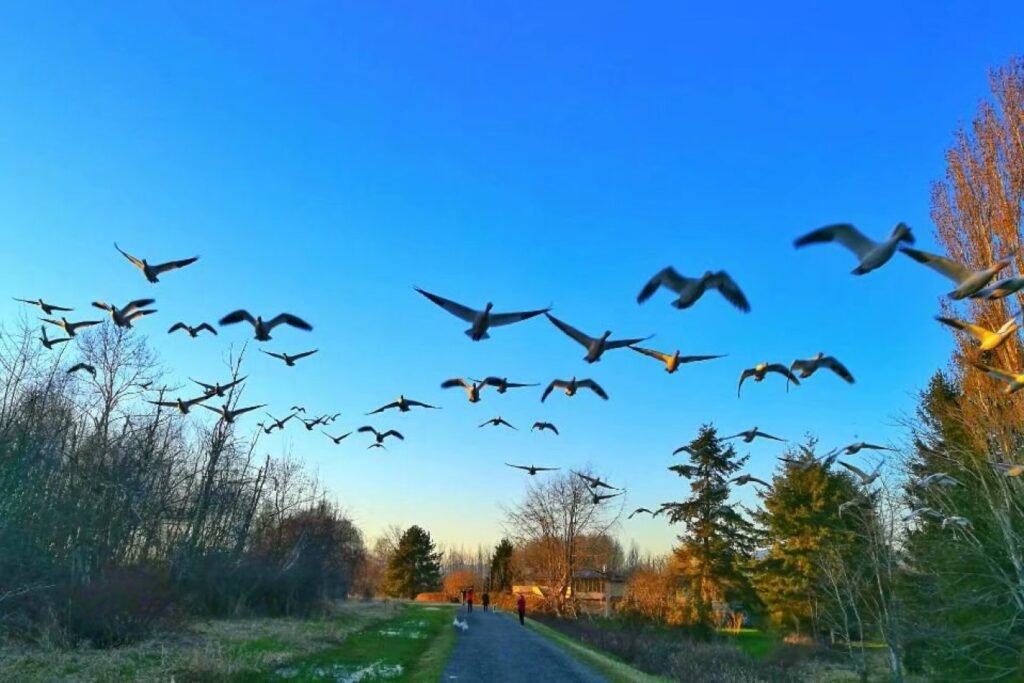

In fact, Canada geese are abundant throughout North America, to the point that they are ubiquitous and no longer considered rare. From the east coast to the west coast, from mountains to lakes, these geese can be spotted everywhere. Despite being classified as birds, they are quite sizable—typically around a meter in length, with wingspans that double their body length. Each goose weighs at least several kilograms. Their robust physique enables them to withstand both heat and cold, allowing them to thrive.
However, this same plump build once tempted hunters, and they were nearly driven to extinction due to rampant hunting. It wasn’t until the authorities issued a ban on hunting them that they were saved from the brink. Because they are highly adaptable, can tolerate extreme climates, and have simple dietary needs—surviving on dry vines and grass—they flourished quickly, even reaching overpopulation levels.
To be honest, Canada is probably the only place where these geese live so comfortably. Other countries, such as the U.S. and Australia, are far less lenient with them and treat them as targets for eradication. But Canada considers them national treasures, offering them legal protection and creating dedicated reserves for them. Canadians treat them like friends, showing kindness and refraining from harming them in any way. The geese seem to sense that Canada is their sanctuary, and they roam freely and happily, flying across the vast skies and waters, truly “soaring over distant clouds, across snowy mountains.”

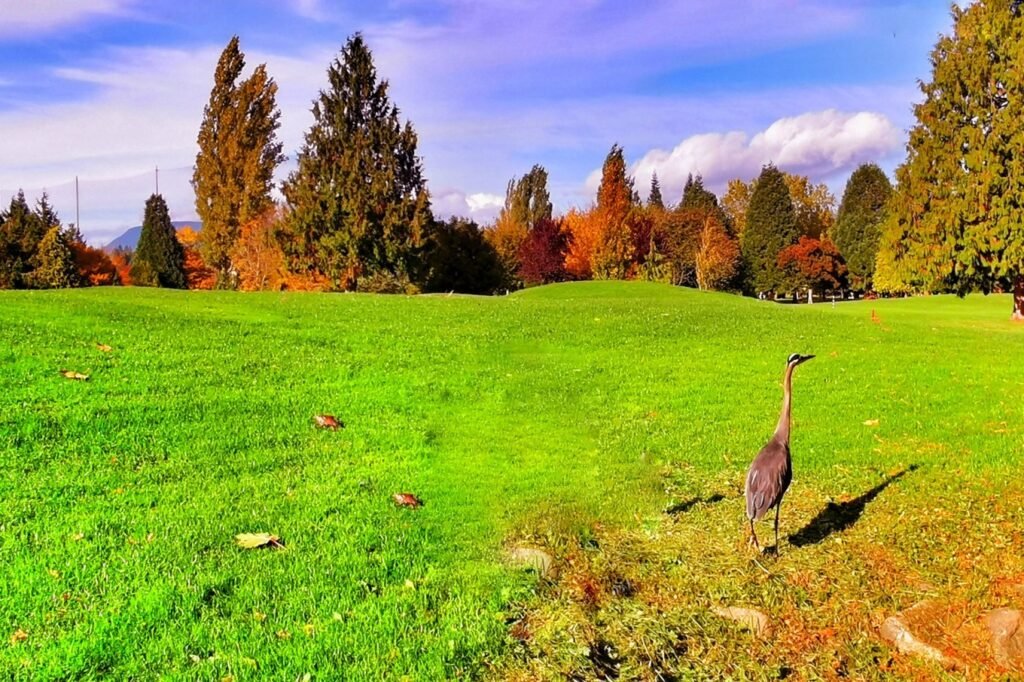
Perhaps due to overprotection—or maybe it’s just in their nature—Canada geese have developed attitudes comparable to spoiled children. Armed with legal status that makes them more protected than people, along with their triple talents of flying, swimming, and walking, they strut with arrogance. If provoked, they retaliate fiercely, refusing to back down or forgive. They hold grudges, and if offended, they are sure to return to the same spot to seek revenge.
Once, on a golf course, a friend of mine tried to shoo away a flock occupying the green. Unexpectedly, these usually gentle creatures suddenly turned aggressive. They let out angry honks, spread their wings wide, and flew at him with outstretched necks like sharp arrows. Their beaks, bared like fangs, snapped toward him, forcing him to defend himself with his golf club. It wasn’t until the rest of us intervened that he managed to escape. Thinking back, the memory still sends shivers down my spine.
Watching these geese search the grass or glide calmly in the shallow waters, it’s hard to reconcile their serene demeanor with the image of aggressive, vengeful predators. Yet, beneath their impressive bursts of strength lies a deep and unwavering love. It is precisely their profound affection for their home and companions that drives them to stand their ground and fight with their lives when threatened. They are devoted to their homes, guarding their territory faithfully, never abandoning it even when they migrate across thousands of miles—“When the geese return, the moon fills the western tower.”
They also demonstrate a strong sense of community, always traveling in flocks. Once they take flight, they form groups that move in perfect formation, creating patterns in the sky. The term “wild goose script” became synonymous with these formations: “The clear river reflects the heavens, white geese form patterns in the clouds” and “Golden dew forms frost on distant palms, clouds follow the lines of flying geese.” Lastly, what makes them most remarkable is their steadfast love. These geese are monogamous, staying with one mate for life. If they lose their partner, they will live out the rest of their days alone, unwavering and without regret. Their love exemplifies the highest ideal of romantic devotion—“What is love in this world? It demands life and death as its price.” This sentiment is immortalized in the ancient poem Song of the Wild Goose, which celebrates their unyielding and faithful love.
Among the massive bird flocks in the sanctuary, snow geese—another local species—stand out. Much like Canada geese, snow geese are also known for their unwavering loyalty in love. However, they are even more inclined to form large groups, always traveling in pairs at home and migrating in enormous flocks. These flocks range from hundreds to millions of birds, forming vast, snowy-white clouds in the sky—a breathtaking sight. There are seemingly even more snow geese than Canada geese, and in fact, their numbers are indeed substantial.

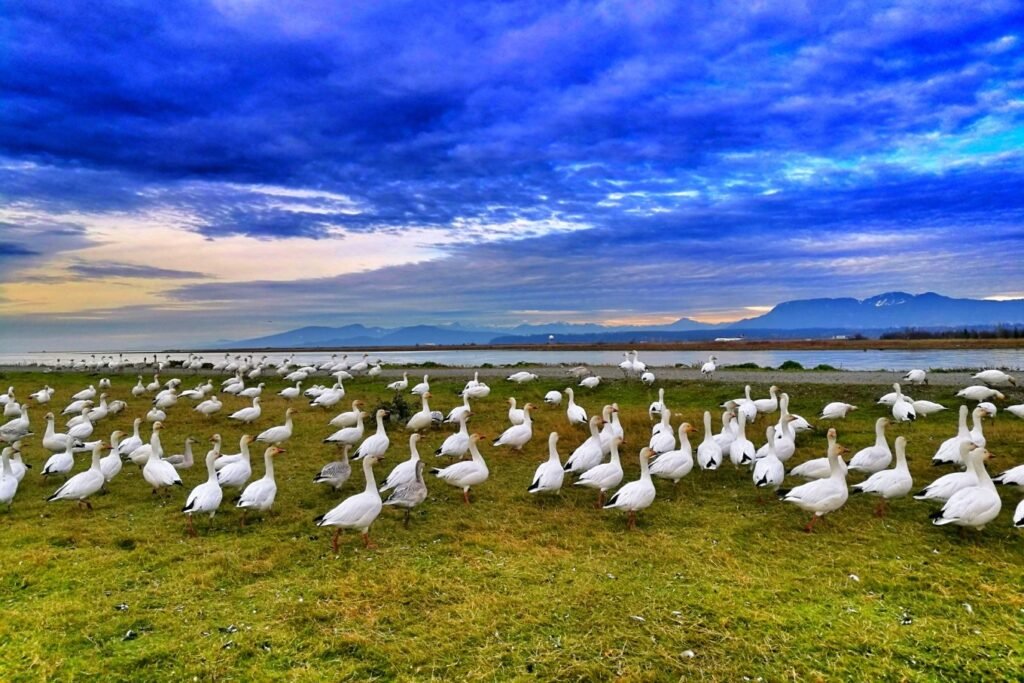
Realistically, it is not easy for monogamous birds like Canada geese and snow geese to proliferate. Natural disasters and human activity have often made such species vulnerable. Their thriving populations today are the result of strict government protections, showcasing that with the right efforts, both people and animals can flourish together. This impressive scene can only be witnessed in the spring. After winter, the geese head north during the spring migration—“I watch the wild geese fly far away, my thoughts drifting along with the flowing waters.” Seeing these migratory snow geese evokes feelings of longing for distant places.
In Chinese culture, aside from symbolizing love, wild geese are regarded as messengers that carry emotions and convey meaningful messages. “To whom shall I send my letter? I entrust it to the geese bound for Luoyang.” “In the Three Gorges, the monkeys wail in sorrow; geese from Hengyang bring letters.” “I send this letter by wild goose; though East Lai is far, it’s not as distant as Penglai.” Throughout history, migratory geese have served as symbols of people’s hopes, dreams, and emotional connections.


